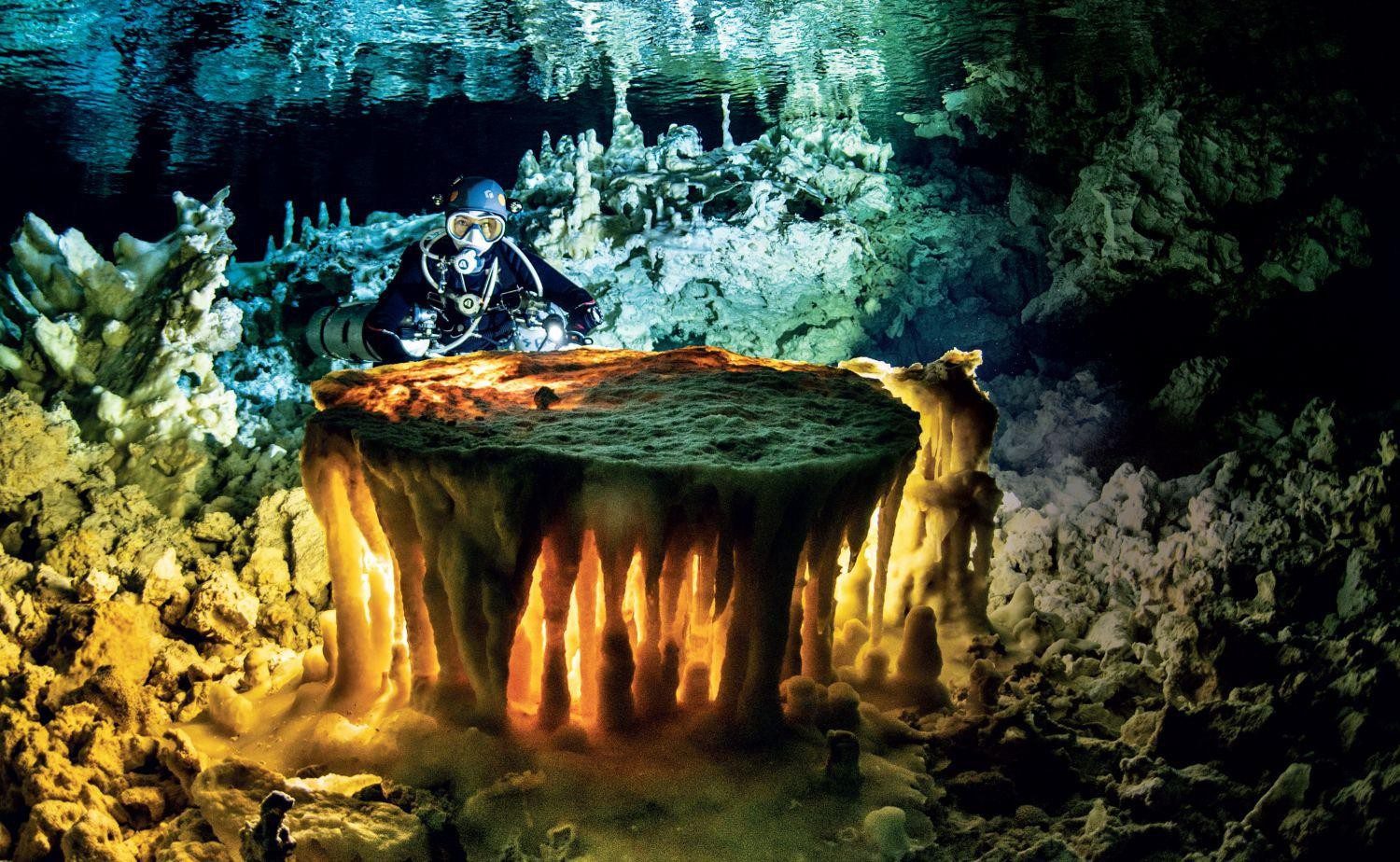A crack team of cave divers embarks on an epic adventure to seek out the cave systems beneath Sulawesi in Indonesia, but as Maria Bollerup explains, just getting to the potential caves was an experience in itself.
Photographs by Pete Mesley, Rasmus Dysted and Maria Bollerup.
The Call of Southeast Sulawesi
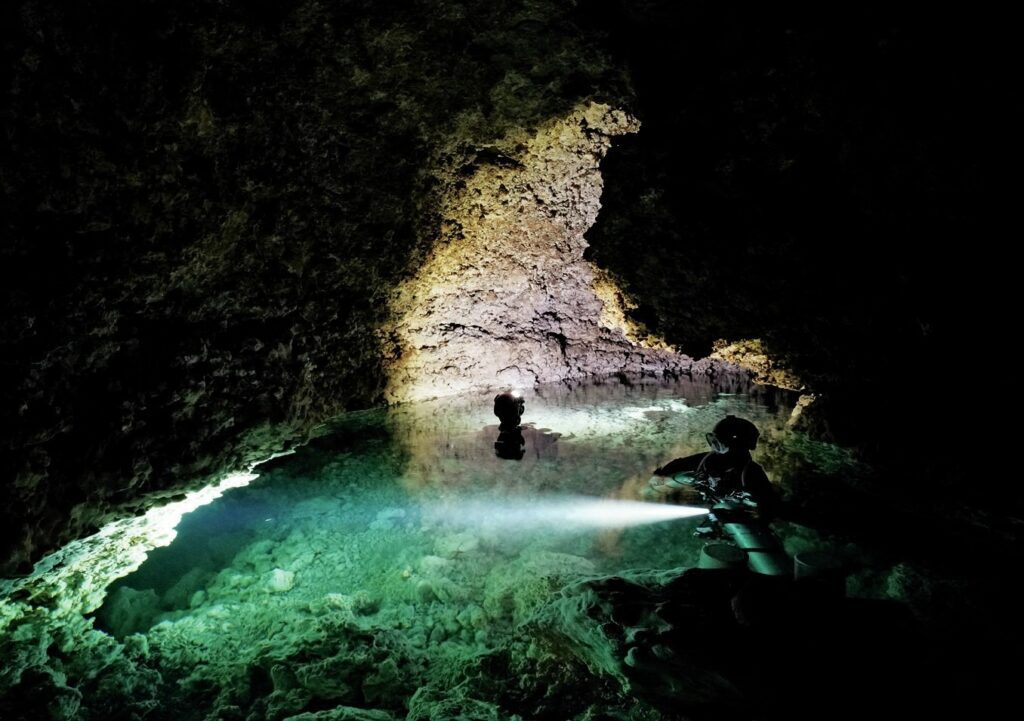
Indonesia is well known for some of the best ocean diving in the world. I know, I have been fortunate enough to log numerous dives from East to West. But in Southeast Sulawesi, this little cave diver had her experience of a lifetime, searching for caves in dense jungle, swampy mosquito ponds, and inside local villages. Equipped with the absolute A-team as dive buddies and surface interval entertainment, it was hard, sweaty work, but worth every second.
Our Training and Expeditions in Florida and Mexico
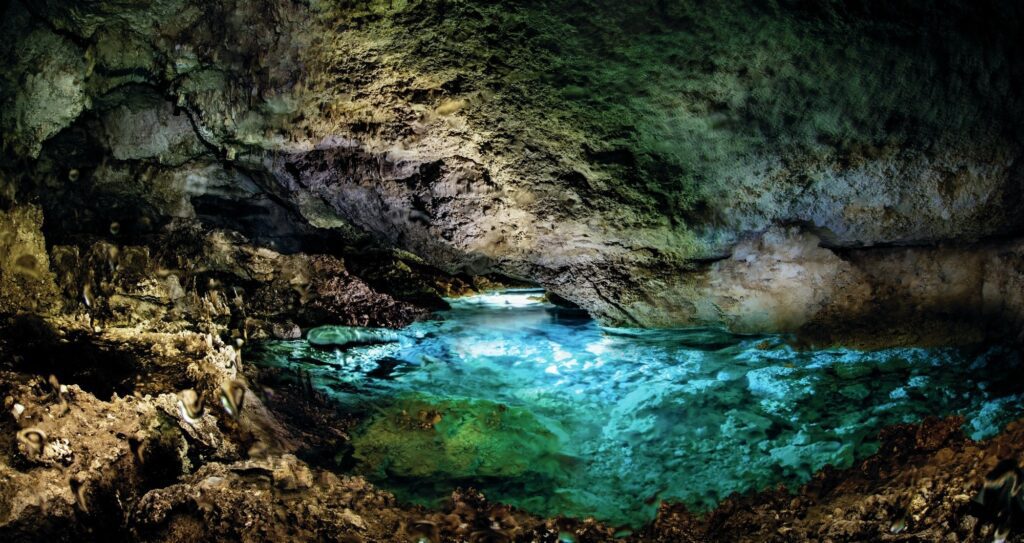
Over the years, I have spent much time cave diving in Florida and Mexico. All my training has been done in these caves that, between the two countries, are diverse and challenging in their own ways. Once my initial cave training was concluded, I had the pleasure of joining my husband Rasmus Dysted when he was traveling with his groups of cave diving students. And when we went for our own private ‘leisure trips’, I had the joy of joining shorter expeditions, scouting for new caves in the jungles of Mexico. I loved every dive, and every challenge the caves would hand me. And then, after eight years as a smitten cave diver, the ultimate challenge presented itself – a cave exploration expedition in Southeast Sulawesi.
The Invitation from Malaysia
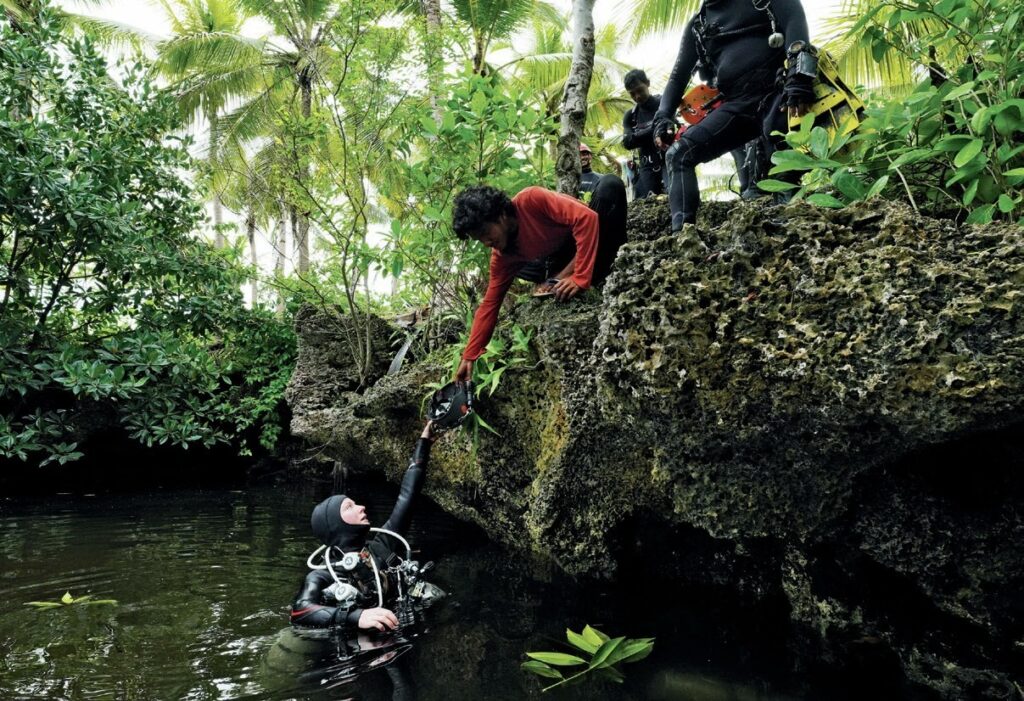
It all started when a Malaysian friend invited us to come cave diving with him in Indonesia. Neither Rasmus or I had heard of any cave diving worth traveling for in Indo, but we were assured that they were ‘highly decorated, but yet, still vastly unexplored’. It didn’t take long before we were in contact with the instructor of our Malaysian friend, who was indeed cave diving on mainland Sulawesi and out on the island of Wakatobi. It turned out that Robin Cuesta, a French dive instructor and cave explorer, had been setting up his base on Wakatobi, and sporadically over the last few years, explored a vast number of caves that were found in the apparent area.
First Impressions of Sulawesi
Talking to Robin, we understood that he had found a ridiculously high number of caves in Southeast Sulawesi, most still needing mapping. He further explained that the northern part of Pulau Buton (Butur area) was completely unexplored, but showing several sinkhole prospects on Google Earth. That’s all the convincing we needed. Flight tickets were booked, and gear lists were created. We knew it would take a lot of hiking, possibly some climbing, and hopefully extended hours of explorative diving. This became the first time where our bags were just as heavy with climbing gear as with dive gear! Luckily, we got around carrying camera gear as well.
Building the Perfect Team
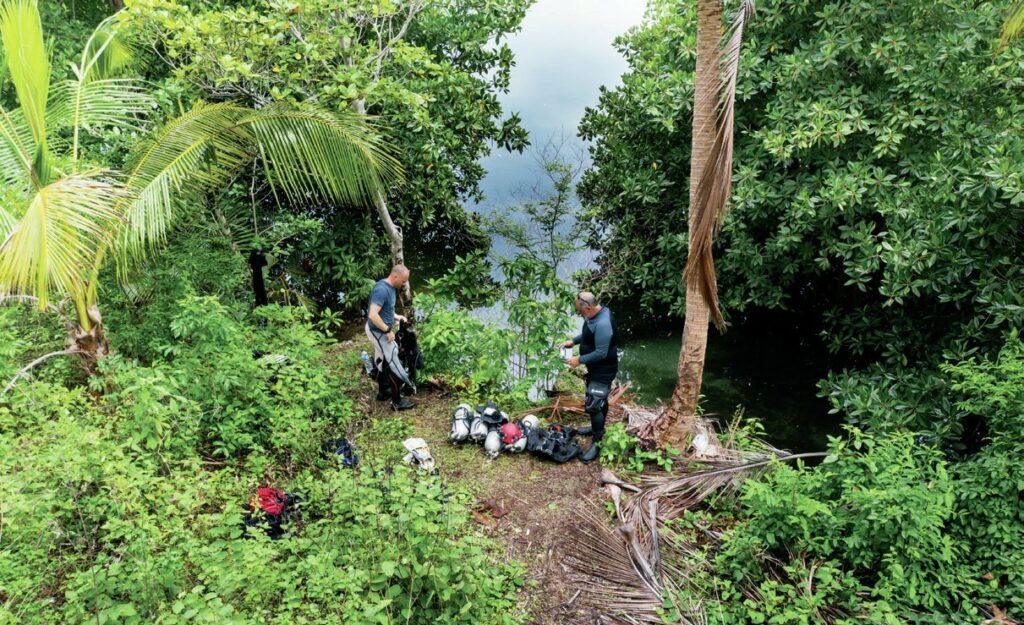
Calling up our good friend Pete Mesley, the infamous wreck explorer, for some advice on camera lightning, Pete barely heard the full story before he burst out with an oath of joining – ‘I am in Maria, this is too good to miss!’
Pete has been running wreck expeditions in some of the most-remote parts of the world, so if anyone would be a positive addition to the team, it would be Pete! And also, he loves (with sparkles in his eyes) taking his camera underwater, and since one of the most-important things on an expedition is documentation… The team was complete.
Journey North to Ereke
After meeting up with Pete and Robin in Bau Bau, and checking all the gear that had been collected by a joint effort, we took to the road and headed north. Our initial base would be the small town of Ereke, and the drive up there involved nearly eight painful hours on the main road, which consisted of muddy jungle track and battered ‘sporadically concreted’ roads with potholes perfectly positioned to best secure the absolute destruction of your internal organs.
But arrive we did, and found ourselves staying at the only hotel in the area. It is safe to say that this is far… FAR… from a tourist area. The fact became apparent upon arrival in Bau Bau, where I jumped in the back of an open truck with all our gear. As we drove through town, people were waving and squealing as if they had never seen blonde hair before. This turned out to be nothing compared to the reactions we caused further north. I have never had people waiting in line to take selfies with me before.
To secure best chances of a positive outcome, we were also accompanied by another cave-diving team on this first part of the trip. Two local Indonesian cave divers and their Russian buddy Igor (of course) would be one team, Pete and Robin another, and Rasmus and myself a third.
The Challenges and Excitement of Cave Exploration
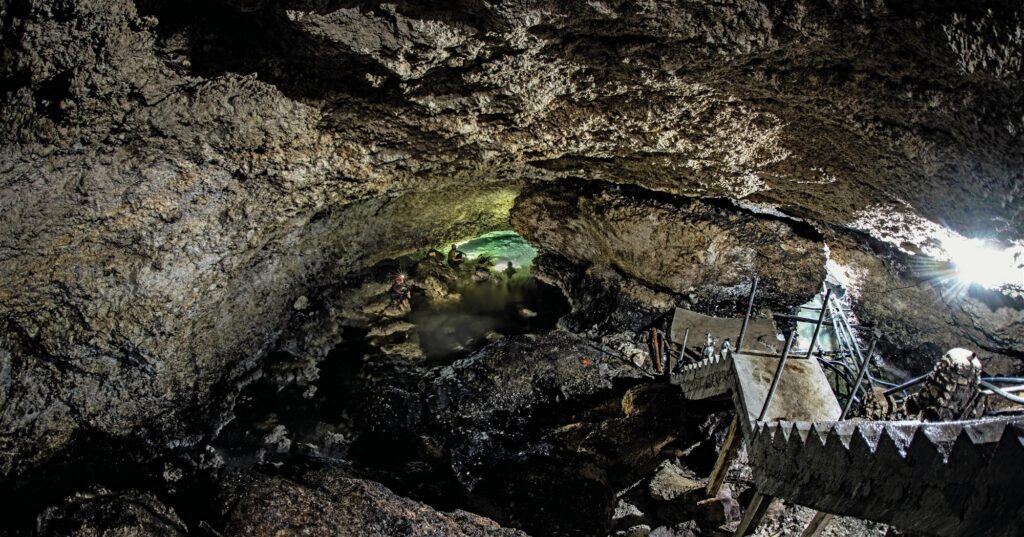
Spending the first few days checking out the lakes and sinkholes that stood out like sore thumbs on Google Earth, it quickly became apparent that caves were present all over. The whole area is limestone and perforated to hell with brackish water. But we also found cave and lakes with tidal water, coral sponges and saltwater fish. The potential cave entries were spanning wide in their location and feel.
We were optimistic and eager to push as many first entries as possible, in the hope of finding the ‘mother system’ that would open up enough for us to dedicate our time to explore it in depth. But so far, this system was still in hiding.
The Exciting Discoveries
We found many caverns, and smaller systems with either shallow water or horrid visibility.
Finding the caves became more and more challenging. We had checked the ones that were near the roads, and Pete’s drone came in handy to fly over patches of jungle that seemed extra dense with higher trees (a good indicator that there is water beneath), or smaller lakes that were more challenging to get to. But before all the gear gets hauled to the water, a volunteer jumps in the water with a little pony tank, speedos (not mandatory), fins, mask and a light, of course. This check could prove either simple and short, or longer and a little more intimidating. Also, for the ones waiting on the surface. At one of the prospective sites, Rasmus was doing the scouting dive. This was a little lake outlined by stunning mangroves and a thick blanket of mosquitos. Rasmus has done plenty of these checks in the past, scouting for caves in Mexico, and I know he is cool as ice. But as his bubble trail disappeared from the surface (and into cave), and a white cloud started spreading in the lake, my heart skipped a few beats. This was a sure sign that the cave was silty, and I wanted him out!
My anxiety was unnecessary. His smiling face emerged back on the surface. “There are tunnels trailing off in three directions, one tunnel for each team,” he announced. The entrance was as deep as 45ft, with an initial slope down to 72ft. Rasmus and I laid the main line, and picked the tunnel to the right, which dived down around a corner to 91ft, opening up to a small chamber, with white silty walls.
The chamber split the cave into two tunnels, one was a vertical drop, the other moved back on itself and ended at 101ft. Having previously discussed and agreed upon safe parameters with regards to gear limitations and remote location, we tied off the line and turned the dive to avoid decompression. The small chamber had lost all visibility due to percolation (our bubbles hitting the ceiling) and the disturbance of the silt where we tied off the line, passing the arrow and line Pete and Robin had placed, the rest of our exit was in complete silt-out. The tunnel Pete and Robin explored also went way beyond the point we could go on this trip. Robin will be back with a rebreather and appropriate support to continue exploration in the future.
A Return South and New Exploration Site: Pulau Muna
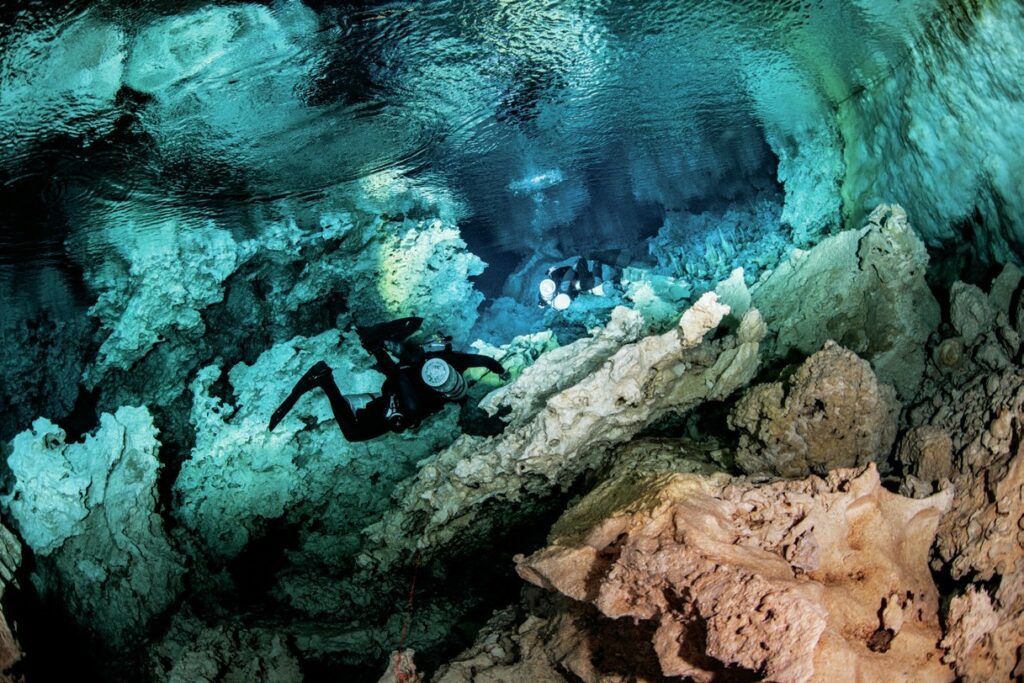
Our time up north was over. We packed up all our gear, and headed back on the intestine-killing roads. It never got any easier crossing numerous suicidal fragile wooden plank bridges that shrieked with decay when we crossed over them!
It was then decided to have a go at some of the caves that Robin had previously marked out on his GPS on the island Pulau Muna. It needs to be said that an expedition like this could not be done without Robin. He has spent a long time familiarising himself on how to get things done appropriately. Politics play a large role and it’s all about respecting the people, the land and the customs. On Pulau Muna, we had to visit the chief of the villages to ask permission to dive in their caves. On a handful of occasions, we sat down and had coffee and food with ‘the right people’, exchanging pleasantries (and, of course, posing for selfies). Robin has been extremely careful to develop the area for cave divers with the utmost respect for the local traditions and culture. It was his hard work that got us the permission we needed to dive in the caves in Pulau Muna, and for future cave divers to enjoy.
Respect for Local Traditions and Culture
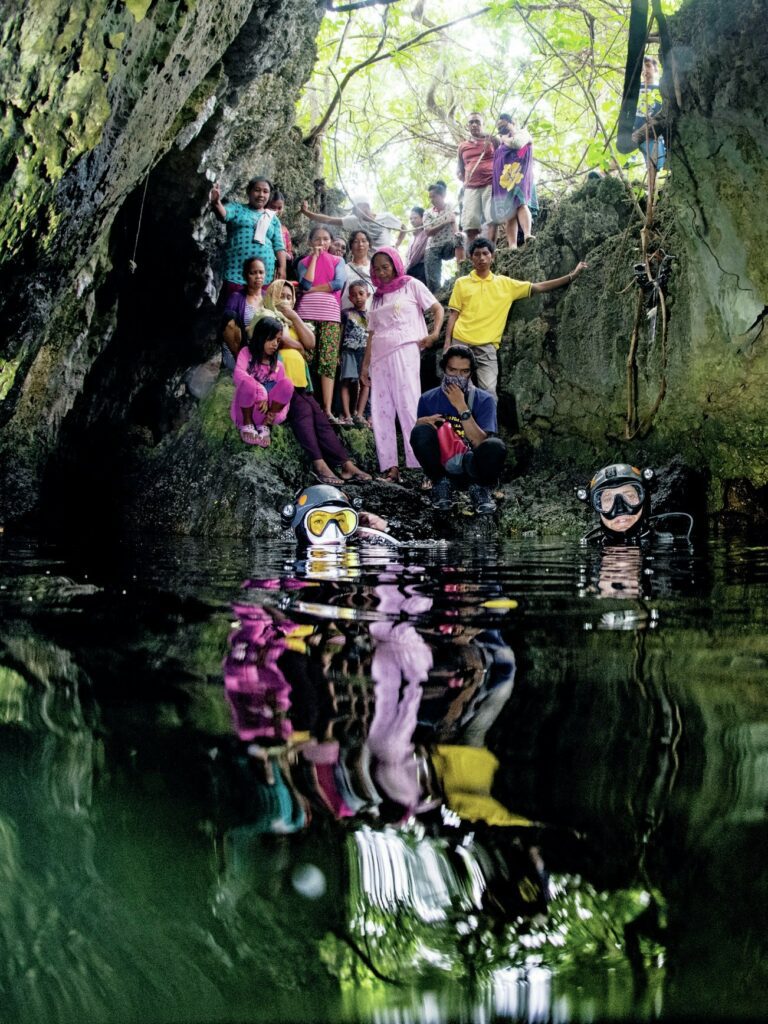
Pulau Muna had a different feel from Pulau Buton. Robin had already laid line in quite a few different caves on the island, and he had a list of GPS marks that was just waiting to be explored. The prospective cave highest on Robin’s list was stunning and deep in the dry cave section. Robin was certain that this cave had massive potential due to the sheer amount of water that was obviously running through the cave. The nearby village had already established an elaborate piped water system, running up through the steep and deep entry, out through the jungle and down to the town. For this reason, we had to do the diplomatic ‘walks and talks’ to gain access, and still stay low to make sure that no one would be upset that we were going to dive in their water supply.
Finding the Ultimate Cave
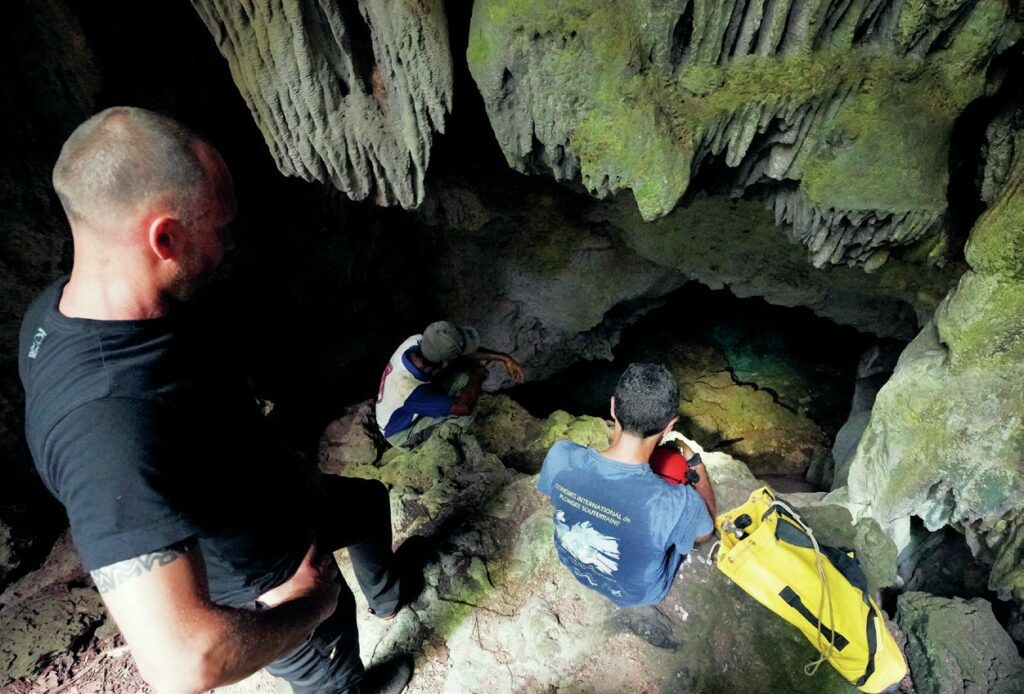
And then, just like that… we had it. Permission to dive the cave. The huge, massive promising dry cave, with the large pond at its bottom, became a reality. Splitting up in two teams, Pete and Robin went ahead on the main tunnel. Rasmus and I followed all initial side tunnels, jumping left and right. The side tunnels kept spinning back round to the main tunnel, but showed some bloody mind-blowing scenery along the way.
The Discovery of a Lifetime
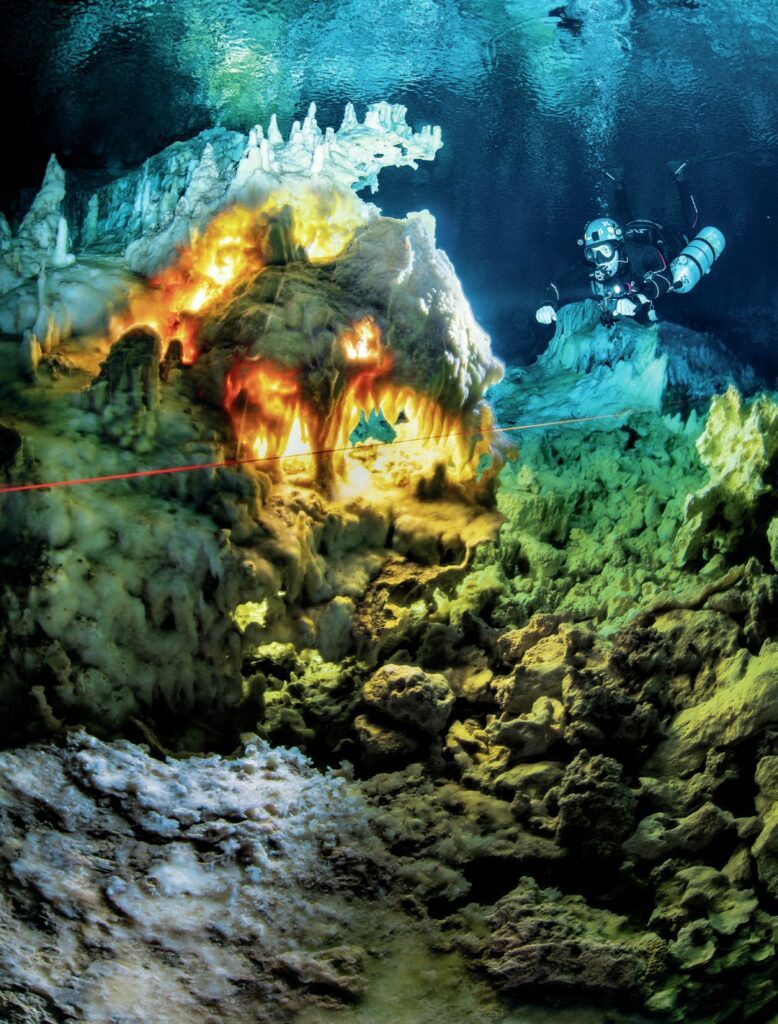
This cave was huge! This cave was no doubt the one that we had hoped for. The one that we built the entire expedition on, but not daring to actually trust we would find it. It was the cave that Robin had hoped existed in his area, the cave that would open up for extensive mapping and exploration. And… it was stunning! The cave was bright white, completely untouched, with unspoiled walls and ceiling of the finest fossils of corals and crustaceans I have ever laid eyes on.
I have always found the Mexican caves fascinating because of the fossils and the formations of stalagmites and stalactites, but this was just five steps up the ladder. Massive fossils of brain-coral, table-coral and stag-horns were sitting side by side with large banks of fragile shells with patterns as intricate and sharp as if they were still alive. But what got me dropping my jaw completely were the giant clams. They were enormous, and they were everywhere.
To start, the cave was shallow, just several feet in depth, sometimes it was completely submerged, but for a fair bit, it was running as a crystal-clear underground river through a huge dry cave, beautifully decorated with stalactites from the ceilings high above.
Later on, Pete spent almost an entire dive in one of these great chambers, climbing around on the dry banks of the cave, photographing the beauty of this coliseum of a room, with the calm broad river running through. I was dumbstruck, we all were (A little disclaimer – I don’t want you to worry!)
Where Pete was walking, the floors were made of hard cave from the stalactites dripping down from the ceiling, so conservation of the cave was intact).
After the cave had been running shallow through the high halls, ever-changing between white corals and shells to crystal formations of stalactites and stalagmites, it dipped down deep. Completely submerged, it continued winding its way for kilometres under the jungle. On my very last dive in the cave, armed with extra stage tanks, I was laying line down the main tunnel, Robin was following me with the Nemo tool (a little device you put on the cave line to measure distance and compass heading).
He was following me at a distance of one tie-off behind, to make sure the line was laid and fixed for accurate measurements. This had me swimming off into the cave, following the obvious main vein, passing tunnel upon tunnel branching off to the sides. We had found it, and we wanted to see how far it would go. On the previous dive, Rasmus and Robin had managed to lay neatly a mile of new line into the cave. Robin and I were bringing stages on this dive and halfway into the dive, we had pushed beyond the point where they had finished emptied their reels the day before. And that was what we were doing now, emptying reels faster than we could fill them.
When Robin finally signaled me to turn the dive, he had reached our turn pressure, I was completely immersed caught up in the pursuit, drinking in the cave. I was in the middle of the best dive of my life. The freedom I felt, when I was swimming into unknown territory, laying line that would provide information and proof of this wonderland, was very humbling. Finding cave that goes is one thing, but a cave of this caliber is a dream come true!
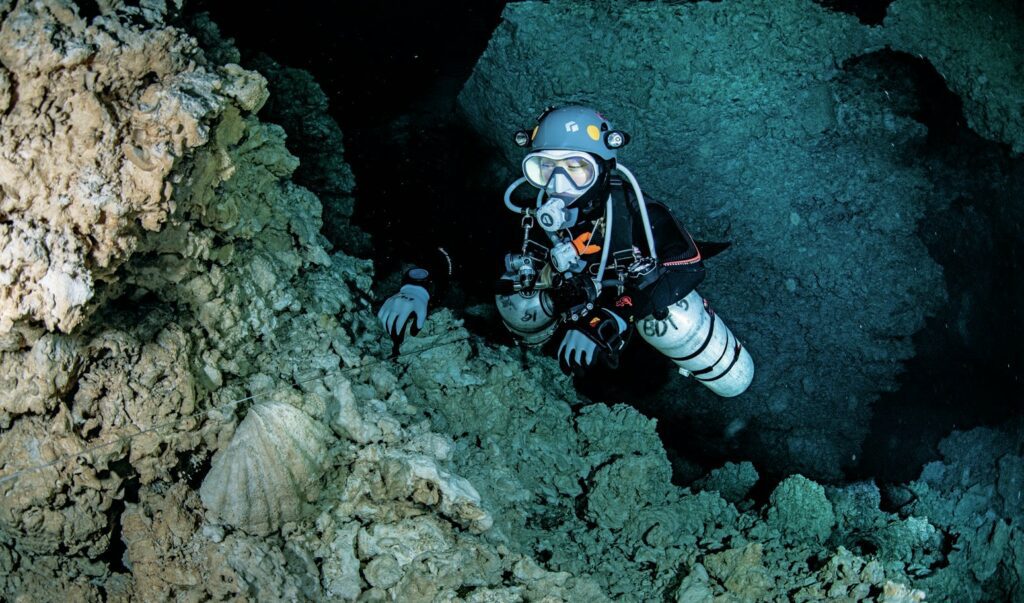
Conclusion: An Unforgettable Experience
We checked out lots of prospect caves, and eventually laid several miles of line, spread between the five caves that went further than just cavern. The exploration of the last cave is still ongoing. The whole area of South East Sulawesi remains highly unexplored, but also rather inaccessible, unless you team up with Robin on his quest to uncover the ancient systems that are found underground. But be prepared for selfies at all times!

This article was originally published in Scuba Diver North America #12.
Subscribe digitally and read more great stories like this from anywhere in the world in a mobile-friendly format. Link to the article
